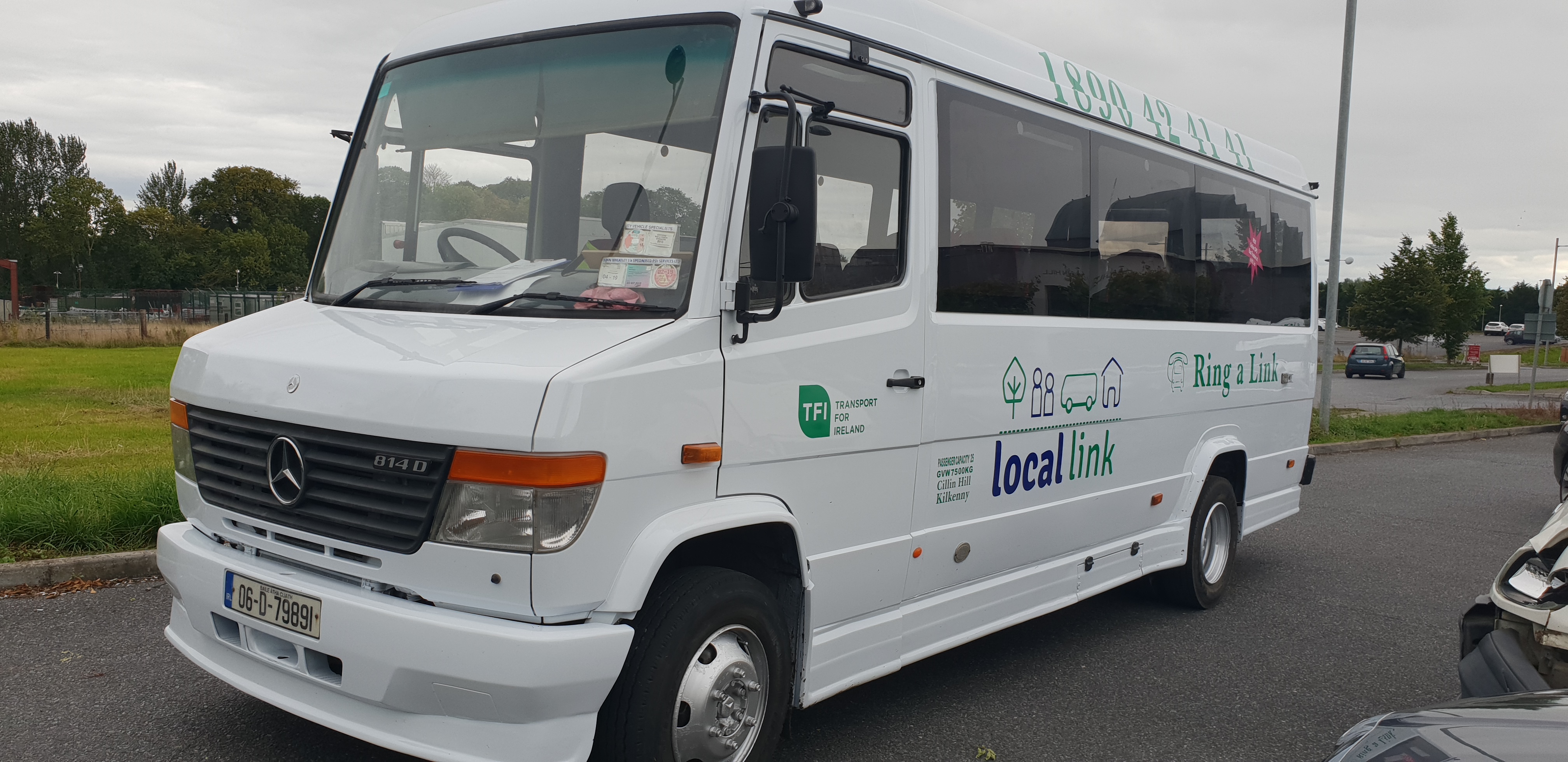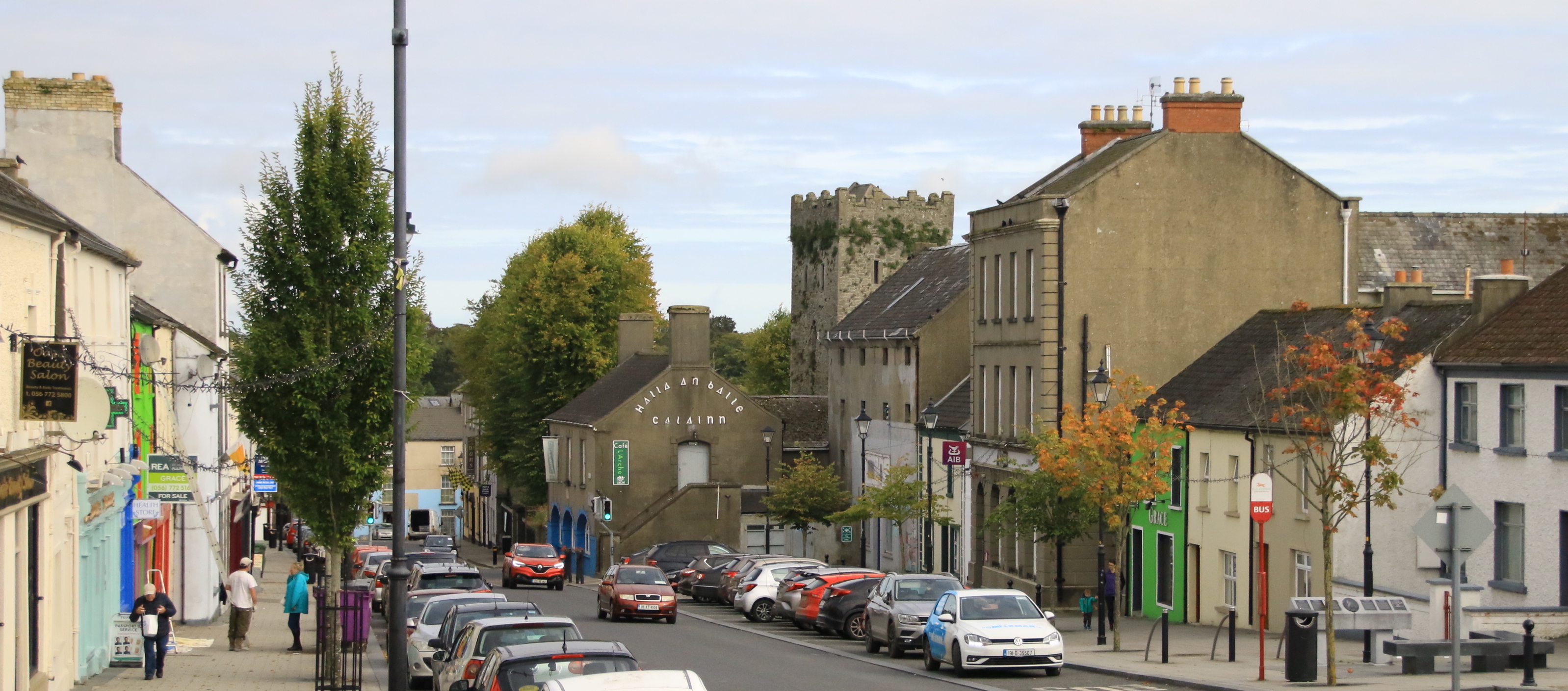
Kilkenny
Standard Public Transport and Ride Sharing
Ireland
Kilkenny County is located in Ireland’s South-East. It is approximately 2,000 km 2 in size, with a total population of 99,232 people recorded in the 2016 census. About half of population lives in urban settlements. Kilkenny City, with a population of about 26,000, is located centrally within the County. It is the geographic, business, administrative and cultural centre of the County. The County has eight towns with population in the range 1,500 to 2,500, and about 20 villages with population of less than 1,000 people. Agriculture, Food Processing, Craft &Design and Light Engineering are the dominant industries in the area, along with a number of financial services and health insurance
centres. Kilkenny is a significant tourist and visitor destination, with extensive cultural and historical heritage throughout both City and County.
In terms of public transport, the County is well served by the national and regional networks, and well connected to both the capital and to other regional centres. Regional and local routes provide good coverage but typically have low service levels, as they mainly cater to commuting times. Towns and villages on the main roads are served by passing routes, but those off the main roads are invariably without any bus service. Thus, while the county is well served by the national and regional network, the challenge for residents of the smaller towns, villages and rural areas is the connection to/from the scheduled bus stop locations where they exist.
The consequence is very high usage of private cars for local and regional travel, and high dependency on lifts for those without use of a car. The lack of connectivity also means that people in Kilkenny City, especially the significant number of tourists and visitors, cannot visit locations and attractions around the County without a car.
Objectives
The Goal of the Kilkenny stakeholders is to improve economic and personal opportunities throughout the county, with mobility being one of the essential strands to do so.
Recognising the strengths and gaps of current mobility services, the Core Objectives of the Kilkenny demonstration site are to: (i) develop the framework for integration of mobility services within the County, which is currently weak or absent; (ii) encourage mandated stakeholders to increase the mobility offer within the county; and (iii) thereby improve opportunities for businesses and people throughout the county.
Integration is the focal issue for KLP, as this can harness whatever current and future mobility resources that are/would be provided by the individual operators, the mechanisms for which are currently lacking. It is especially important that the conventional public transport operators will engage with and get involved in a more connected system, which is a key element of the demonstration.
Description of actions
The Kilkenny demonstration consists of a set of linked initiatives that will provide a platform for integration of scheduled public transport and other forms of rural shared mobility. A set of SuperStops are being developed to facilitate connections between national/regional bus services and local mobility services. The technology platform is being developed to provide real-time passenger information on displays at the stops, on the web and by mobile app, plus connection management. The platform includes physical devices, back-office software and in-vehicle location equipment. A pilot local mobility service is being implemented in the Lingaun Valley, connecting with regional services at a SuperStop, which provides the dual role of heritage route for visitors and village connector/feeder for residents. The integration cluster, along with the existing county-wide DRT services operated by Ring a Link and the City bus services, provides the basis for the SMARTA Evaluation.

